The CV-1000 returns, but at what cost?
One thing that always amazes me about the arcade industry is the ingenuity of the, shall we say, post-market. Certainly there are simple things like the 60-in-1 or the King of Fighters ‘97 pirate board that are little more than interfaces between MAME and a JAMMA edge, but more interesting things include the Teddy Boy Blues complete recreation of Sega’s System 1 hardware. But what about the CAVE CV1000? Could that be recreated?
Challenges
At the time the Teddy Boy Blues board was likely created, making a clone of the System 1 board was the only financially viable way to make something that could play System 1 games. They probably would’ve used MAME, if that was an option. So of course, for someone to actually recreate the CAVE CV1000 hardware we’d be firmly in enthusiast territory.
That being said, the CAVE CV1000 has one thing I noted in my blog post that makes it particularly desirable to recreate, beyond the high price of the games: slowdown.
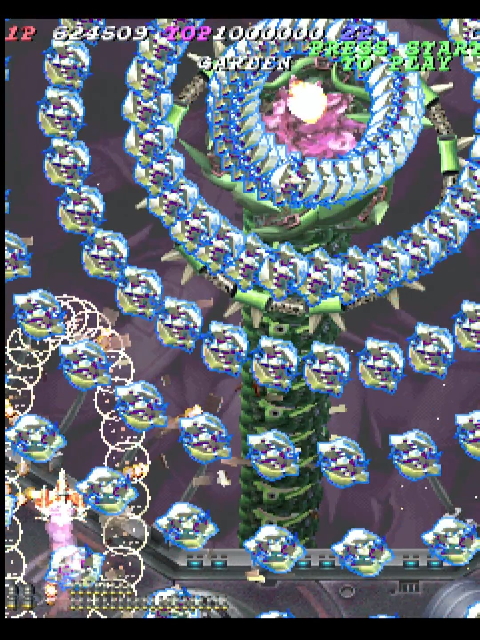
CAVE’s stock and trade were bullet-hell shooters, a genre noted for having huge amounts of moving objects on-screen, as well as genre noted for popularity with high score runners. The slowdown behavior of the hardware is not only an inevitable consequence of moving that many objects, it also is a key part of the gameplay; Ibara on PlayStation 2 was harder than in arcades because it slowed down less. And slowdown here is inherently tied to the specific traits of the hardware; even today MAME has its issues.

Enough reused screenshots from 2022. The combination of a dedicated fanbase and an experience that even in 2025 is tied to specific hardware creates a unique incentive for cloning, even in an era where the original financial motivations for arcade clones are gone. But did they succeed?
Refresh yourself
The CAVE SH-3 platform consists of the following major parts:
- A Hitachi SH-3 CPU
- An Altera Cyclone FPGA which runs the graphics system
- A Yamaha YMZ770 synthesizer chip
- A selection of flash memory chips which store graphics and programs
Notice that while some of these may be out of production, nothing here is actually exclusive to CAVE; in fact, Sega’s System 1 had more custom chips. But this makes sense: CAVE was a very small company making small-batch arcade games, a completely different league from Sega. (Their previous boards were licensed from IGS and Atlus, and they didn’t design this one in-house either) This also makes the recreation of the board within the realm of possibility, if you can scrounge up the parts.
Which clearly, someone did.
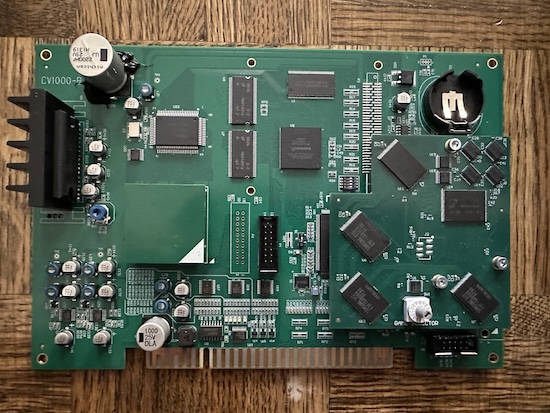
You might notice two daughterboards plugged in, one with a rotating option select. Ignore those. The most important thing here is that these look a lot like the original CV-1000. Original Gerber files, I’m told. Legal? Well, CAVE doesn’t want me using these boards in my country even if I bought them from them…
Let’s remove the daughterboards and go for the comparison with the original CV-1000. This is my Ibara PCB, since I wrote the blog post on that. I didn’t take that one fully out of the case, so it’s slightly closer to the camera, sorry.
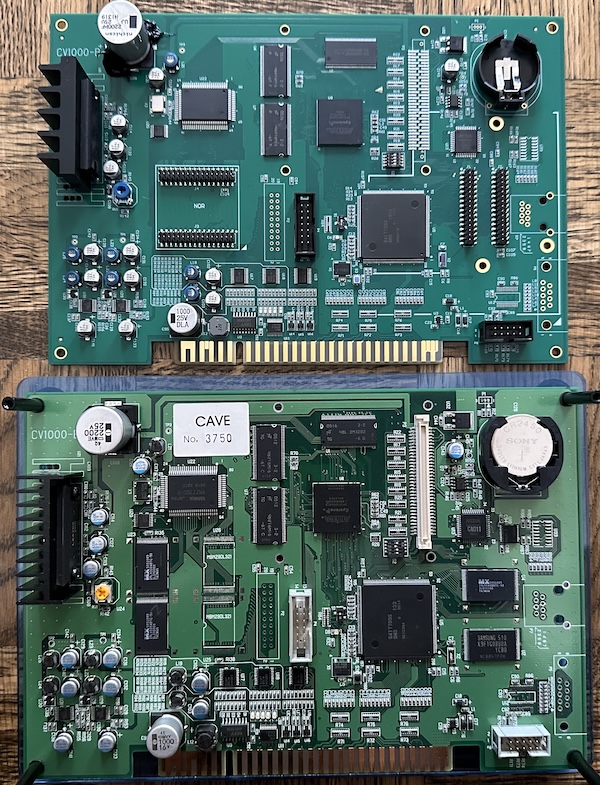
You can see that the layout is nearly identical, though the solder mask colors are different. The daughterboard attachments have replaced the original ROM chips, but pretty much everything else is identical, from the same FPGAs and the same giant capacitor near the audio amplifier.
But how similar are they? Well, here’s an identical screenshot run on each board. Can you tell which is which?
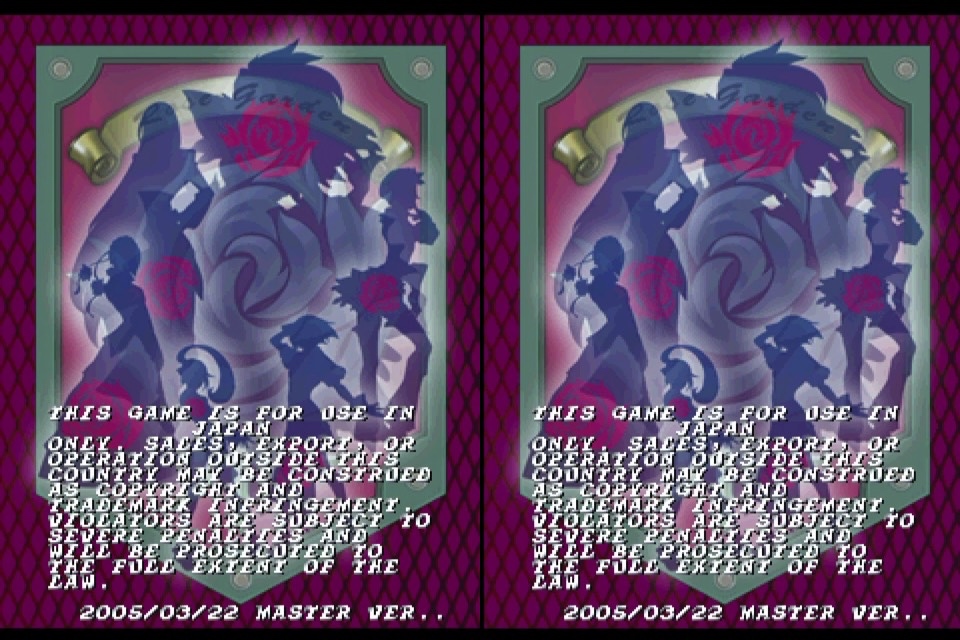
How might we prove comparable slowdown accuracy, though? Well, sticking with Ibara, we notice that there appears to be slowdown in the very first attract mode loop, which we can run without needing to take any interaction with the system. These loops ran at exactly the same number of frames in my tests.
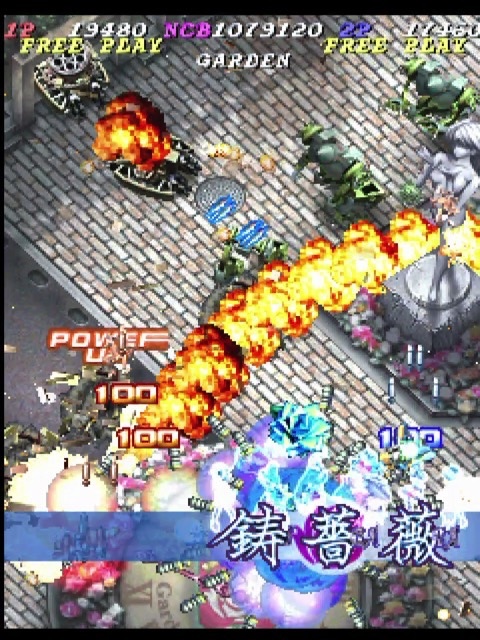
So they’ve recreated Ibara pretty well. And that’s a win on its own; but what else can this do?
We want the D
There was a second variant of the CV-1000 hardware, the CV1000-D. This was a pretty moderate upgrade:
- Removed the real-time clock battery (the sticker is there instead)
- Increased SDRAM from 64 megabits to 128 megabits
Obviously the battery isn’t populated on the board, so we’ve got that out of the way. What about the SDRAM? That’s U1 on the PCB. On Ibara, that’s labeled MT48LC2M32, as we expect, a 64kib SDRAM made by Micron Technologies. And on the multi-board, it’s an ISSI IS42S32400F-6TL; 128 megabits of SDRAM.
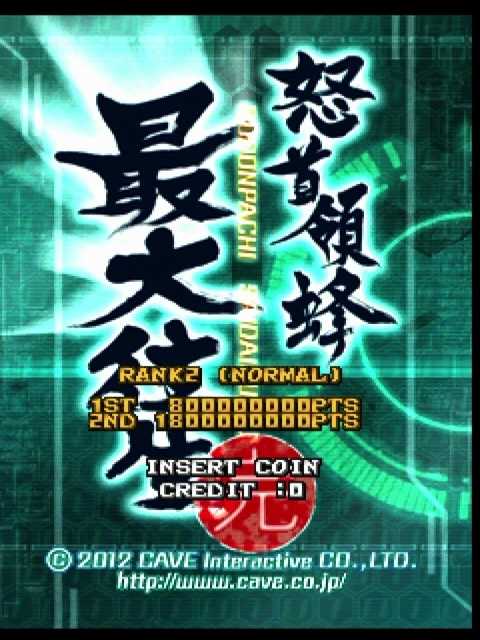
So yeah, you can now play Dodonpachi True Death (or Saidaioujou, if you prefer Japanese) on a PCB labeled “CV1000-B”. And this is nice, because the original release of this still isn’t officially playable in MAME due to Exa-Arcadia. (Of course, there was a recent Nintendo Switch port, so True Death isn’t trapped in the Xbox 360-only hole that Muchi Muchi Pork is)
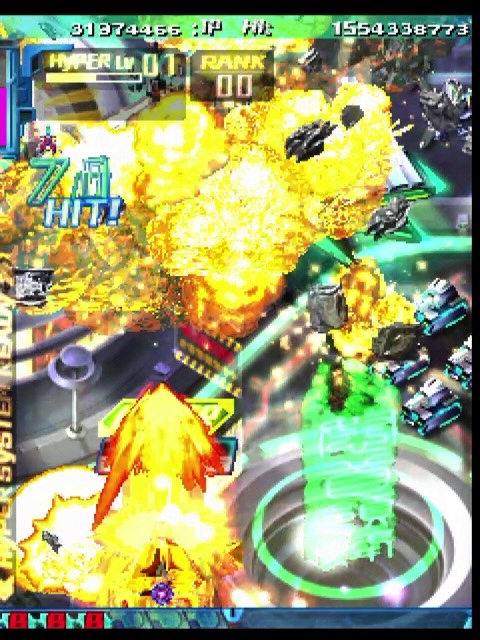
Other games that used the CV1000-D circuitboard include the Black Label version of Deathsmiles, Akai Katana and all versions of Dodonpachi Resurrection (Daifukkatsu). But Saidaioujou is my personal favorite of the bunch. (In my defense of the gameplay above, it’s hard to play a bullet hell and dial in OSSC settings simultaneously!)
ROM hackery
There are ROM hacks out there of CV1000 games. Of course, much like CHR-ROM on the NES, having the graphics be in a separate flash chip makes graphics hacks particularly easy to make, and for a time, the only dump of Dodonpachi True Death on the internet was one with significant graphics edits.
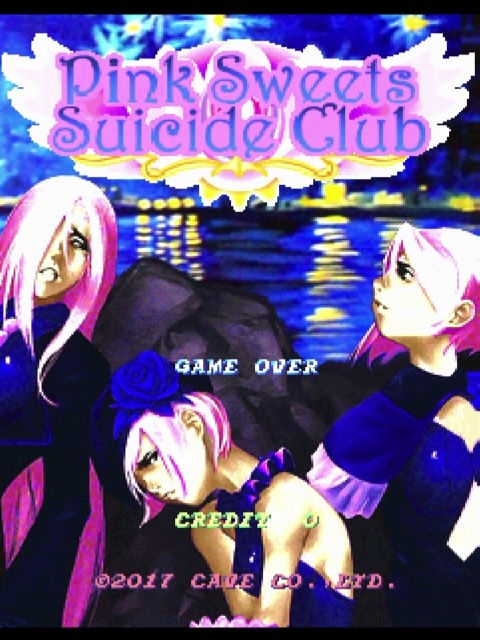
More interesting is this hack of the sequel to Ibara: Pink Sweets Suicide Club. The original Pink Sweets was a spiritual successor to the famous Famicom shooter Summer Carnival ‘92: Recca. This hack makes significant changes, including a new control scheme and visible meters for the games’ “rank” and “zan” mechanics. The new control scheme is definitely going to take some getting used to…

Of course, you can always play ROM hacks on the original boards through a slow overwriting process. But I think being able to switch between them makes this a lot more feasible.
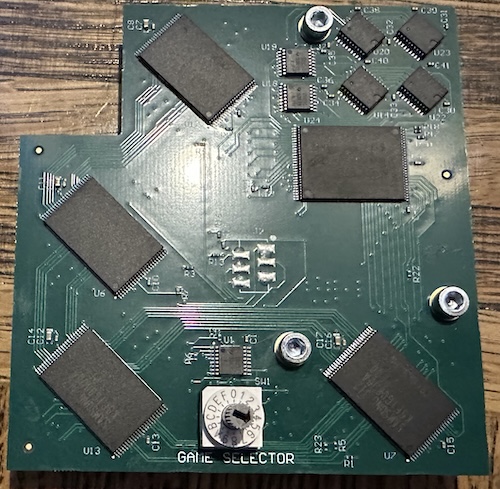
It is worth noting, though, that in the desire to match the original parts, the boards use the same flash memory chips that CAVE did on the production boards. And enthusiasts will know that those flash memory chips are unfortunately fairly error-prone, especially with repeated rewrites. So this probably isn’t the best platform to use, say, as a development board.
Acquisition
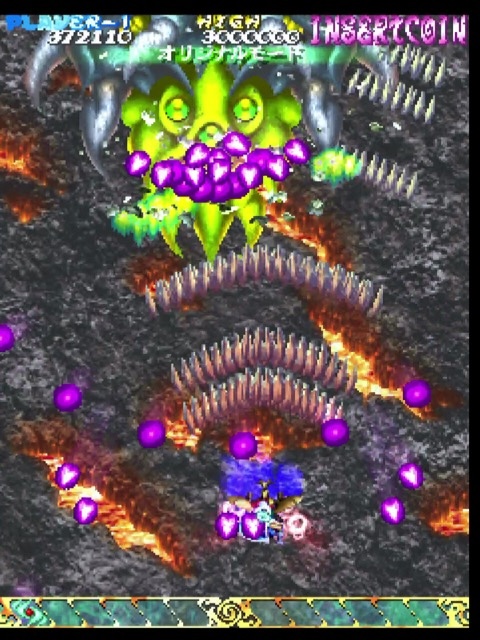
So, do you want to get your hands on one of these? Usually I tend to treat artifacts as some kind of mysterious source, but in this case I’ve been told that Discord user XtraSmiley has about ten of these boards remaining in the United States. Of course, ROMs are your own responsibility to legally obtain. And it’ll cost you: $3000 for the lot, with two multi-boards and one PCB. Apparently sourcing some of these parts is pretty difficult, plus, I mean, it’s CAVE, everything’s expensive. Dodonpachi True Death goes for more than that regularly.
Is it worth it? Depends; these games aren’t perfectly emulated, so in that sense, this is the way to play them exactly as intended. But the emulations are also pretty good. So it’ll come down to I think the most hardcore of shoot-em-up devotees. But for someone as far down the arcade rabbit hole as me, though? It’s pretty cool, I’m not going to lie.
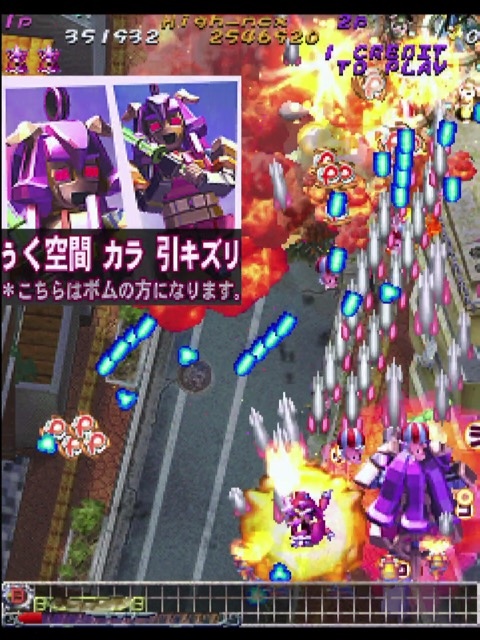
Nicole Express was not in any way, shape or form sponsored or supported by anyone for this post. No hardware or software was provided free of cost; everything was paid in full. Nicole Express has more money than sense, and has more curiosity than either.
